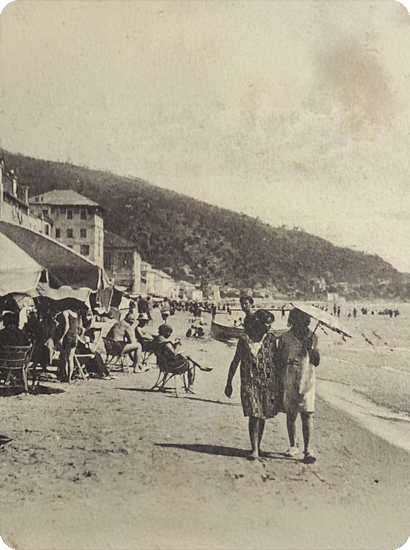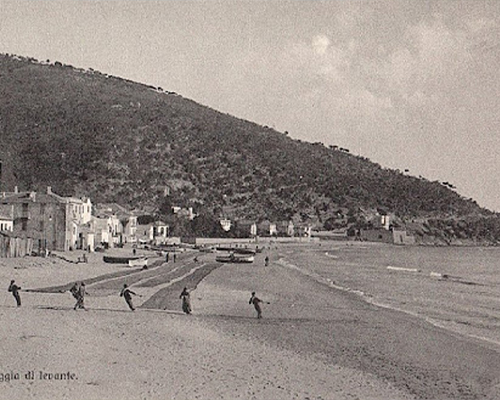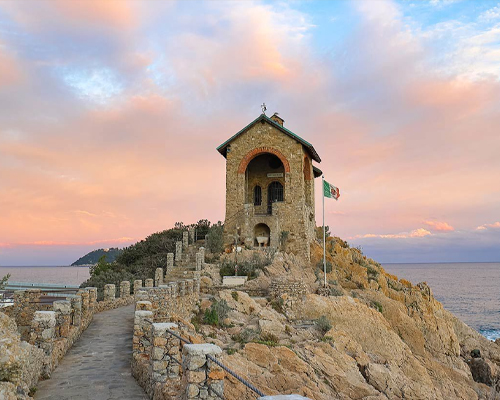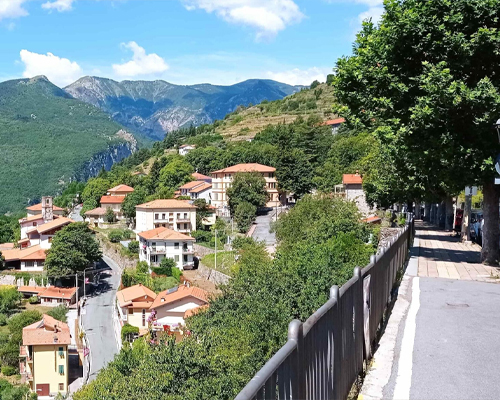Legend has it that Adelasia, daughter of Otto I of Saxony, Holy Roman Emperor, had fallen madly in love with Aleramo, a young cupbearer at the court.
Opposed by the Emperor, the two lovers decided to flee Germany and reached Liguria where they hid in a beautiful bay with a few fishermen's houses.
As always in these cases, there is a happy ending: thanks to the value and courage shown in battle by Aleramo and thanks to the mediation of the bishop of Albenga, when Otto came down to Albenga he reconciled with the couple. Where Adelasia and Aleramo had settled, a city arose that in honor of the princess was called Alaxia which later became Alassio.
This is the magical and fantastic legend linked to the birth of Alassio. In reality, the center of Alassio was born around the year 1000 when the first inhabitants came down from the hill and settled near the beach, perhaps taking advantage of a moment of respite from the Saracen raids.
As the years passed, commercial activities developed more and more because the boats were stationed in the well-sheltered bay to unload and load the goods that were stored in the warehouses that overlooked the numerous alleys.
The crisis began between the seventeenth and eighteenth centuries when the trade routes moved elsewhere and the threat of Napoleon created problems.
In the nineteenth century Alassio was once again a modest fishing village and many inhabitants were forced to look for work in the tuna fisheries scattered around the Mediterranean.
- Tel: +39 0182.640037
- Email: info@residencerodi.it
- Whatsapp: +39 0182.640037
History

But the turning point came in 1872 when the railway line opened: for the navy it was the final blow, but paradoxically for the city's economy it was the beginning of a new era. The English arrived by train and were so won over by the climate, the sea, the unspoiled nature, and the still wild village that they decided to buy land and build villas to spend the winter there.
Thus the English colony was born and with it the Anglican church, the English library, the tennis club, the villas on the hillside arose and hotels, clubs, tea rooms and the casino appeared. The modest fishing village thus became one of the most famous holiday resorts in all of Europe, frequented by famous people, who managed to maintain its fame even when the English left at the beginning of the 1930s due to the international situation.
Alassio's tourist vocation did not end and resumed in the 1950s and 1960s, the era of the so-called "dolce Vita" of Alassio. The hub is the Caffè Roma on whose stage the most famous names in show business perform. In the same years the Miss Muretto beauty contest was born, as well as the Muretto, conceived by Mario Berrino and Ernest Hemingway who signed the first tile, and which has become the symbol of Alassio.





